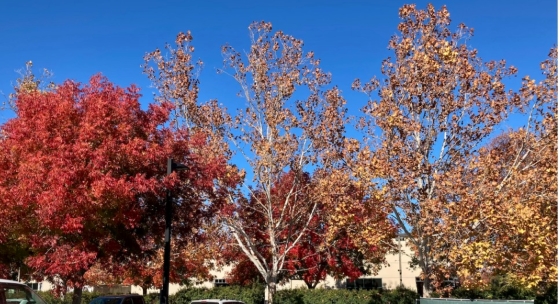 Did you ever wonder why trees “turn” color in the fall? The short answer: It’s primarily a function of long, cool fall nights and short, sunny days.
Did you ever wonder why trees “turn” color in the fall? The short answer: It’s primarily a function of long, cool fall nights and short, sunny days.
The longer answer? Chlorophyll is responsible for the basic green color of leaves we see in spring and summer and is a necessary component of photosynthesis, which uses sunlight to manufacture sugar (food) that is stored during the dormant period of the year. Carotenoids produce yellow, orange and even brown pigments in crops such as carrots, squash, bananas and many ornamental plants such as daffodils and poppies. Anthocyanins are red and orange in color and are most linked to lavish displays of brilliant fall foliage. They also give rise to coloring of strawberries, plums and cherries.
Here’s the kicker: While chlorophyll and carotenoids are present in leaf cell chloroplasts throughout the entire growing season, most anthocyanins are only produced in fall due to bright light and excess plant sugars within leaf cells.
